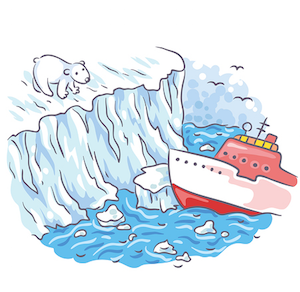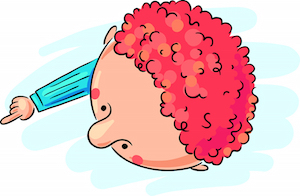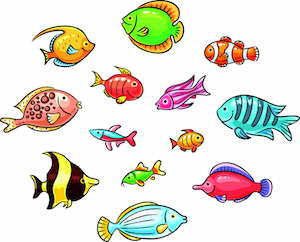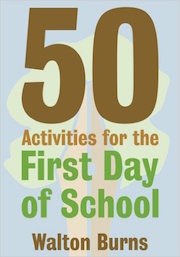Don’t Break the Ice, Build Your Community
Every year I used to do the same icebreaker in my ESL class. On the first day, I put students in pairs and wrote a few topics on the board such as name, favorite animal, and what you did over summer. Then I had the students ask each other questions like, “What’s your favorite color?” and “What did you do this summer?”
Once they had shared their information, each partner would report one interesting fact back to the class.
This activity satisfied the requirements of an icebreaker. It got students talking, breaking the proverbial wall of ice. They shared some information about themselves. Students liked it well enough, but it was hardly engaging or memorable.
My first effort to get beyond icebreaking
Then one day, in a class that fell during last period, I decided it was time to do something different. It might be fun to have students talk about which teacher they liked most and why.

I ended up turning the first 20 minutes of class into a debate, breaking students into teams by favorite teacher. And let me tell you, those self-identified groups stayed bonded for months. The kids had really built rapport with each other – and it probably didn’t hurt their favorite teachers either.
I’ve never recreated the total success of that day, but I did rethink my first-day-of-school activities. Since then, I’ve strived to go beyond perfunctory icebreakers. In fact, I no longer try to do traditional icebreaking activities. I prefer community-builders.
Personal, meaningful, concrete
So what exactly is a community builder?

Some icebreakers ask students to share something interesting or unusual about themselves. But few teenagers want to stand out. I’ll spare you my 7th grade nicknames after my classmates heard me tell all about the summer my family spent in England.
On the other hand, a good community builder gives students a topic they can and want to talk about. It focuses on topics that are personal, immediate, and concrete. By personal, I mean the student can relate to the topic. They see how it affects them.
Meaningful topics are ones students actually care about here and now. And concrete questions are clear and specific. If your icebreaker starts with imagine you are an alien hovering over Earth 100 years in the future, it’s probably too abstract to get a good conversation going.
Working — and doing the work together
A lot of icebreakers have students working alone to collect and then report information. Even when talking to another student, the task is basically a solitary one. By contrast, a good community builder gets students working together.

For adolescents whose social life is often in a constant state of flux, it was also great to show them that they could work together with strangers, or even students they didn’t like. When we have a common goal, we all have an impetus to work together.
And, while it may not seem so at first glance, the work my ESL students were doing was real classwork: thinking critically, expressing opinions, hedging or qualifying statements, using transition words, rephrasing and summarizing! They were already practicing English on day one. They did something real in class and that always feels good. And don’t we always love tricking students into working and learning.
Meaningful work, meaningful fun
Working together toward a common goal can help students get to know each other better than asking about each other’s favorite color.

It’s also good to start the year off with some fun. Fun in the classroom is important to building bonds. When people are having fun, they are relaxed and more receptive to each other. People do bond with people they laugh with, and when students are having fun they often forget they are working.
But we don’t want to do activities that are empty fun. And when students are engaged in a lively topic, it becomes interesting and fun for them, even if it isn’t a traditionally “fun” activity like a game.
A few examples of community builders
So if icebreaker is a poor term for what we want to do on the first day of class, what are some good community builders?
► As you might guess, I find that debates are great activities that students can get lost in. Talking about their favorite teacher or favorite subject seems to work well generally. I also like having my ESL students debate the best way to learn English or ways to prepare for a test.
These are topics students know and have something to say about, and can share their prior knowledge. At the end of a debate, students can present the results in a variety of creative ways from a poster to a presentation.

You can even ask more subjective questions such as, “Find a page that you think will be interesting to study” or “Find something in the book you already know, and explain it to your partner.” This gives students a sense of ownership of the subject and the class.
Let students share with the class and the teacher what they are excited to learn and what they think will be difficult. And of course, jot down their answers to help you adapt the class to your students’ interests and needs.
__________






































Nothing wrong with fun! I like your examples. I always had fun with “line-ups,” like a birthday line-up from January to December and then by day that the students had to do silently by just holding up an index card. Alphabetically lining up by your first or last name is good, too. After the line is “confirmed,” students can turn to the person next to them and talk about why they like their birthdate or don’t like it. Adults have fun with this activity, too!
Yes! The line-up game is fun and it’s a good way to develop communicative skills if you don’t let students talk. I have an example in my book of getting students to line up by height, without talking, which seems easy. Then you can move on to having them line up by how long they’ve studied English (or lived in the US, or been studying at your school), which requires a bit more communication. Watching them develop a “language” is definitely real work, and leads to some good conversations, as you say!